USP CLASS VI
USP 88 class VI vs ISO 10993
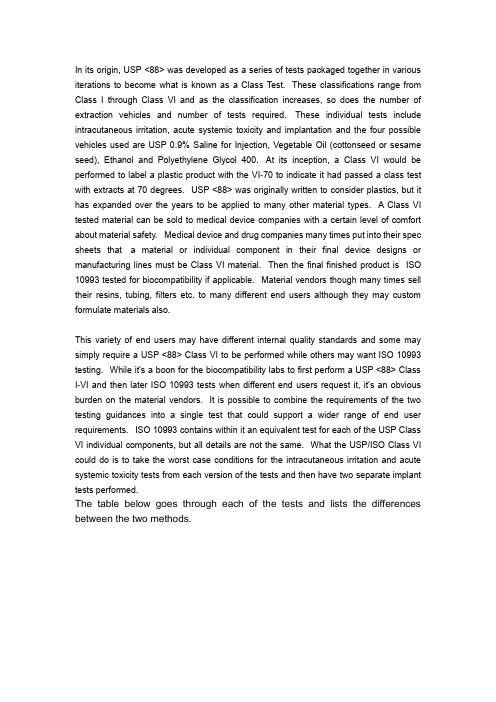
In its origin, USP <88> was developed as a series of tests packaged together in various iterations to become what is known as a Class Test. These classifications range from Class I through Class VI and as the classification increases, so does the number of extraction vehicles and number of tests required. These individual tests include intracutaneous irritation, acute systemic toxicity and implantation and the four possible vehicles used are USP 0.9% Saline for Injection, Vegetable Oil (cottonseed or sesame seed), Ethanol and Polyethylene Glycol 400. At its inception, a Class VI would be performed to label a plastic product with the VI-70 to indicate it had passed a class test with extracts at 70 degrees. USP <88> was originally written to consider plastics, but it has expanded over the years to be applied to many other material types. A Class VI tested material can be sold to medical device companies with a certain level of comfort about material safety. Medical device and drug companies many times put into their spec sheets that a material or individual component in their final device designs or manufacturing lines must be Class VI material. Then the final finished product is ISO 10993 tested for biocompatibility if applicable. Material vendors though many times sell their resins, tubing, filters etc. to many different end users although they may custom formulate materials also.This variety of end users may have different internal quality standards and some may simply require a USP <88> Class VI to be performed while others may want ISO 10993 testing. While it’s a boon for the biocompatibility labs to first perform a USP <88> Class I-VI and then later ISO 10993 tests when different end users request it, it’s an obvious burden on the material vendors. It is possible to combine the requirements of the two testing guidances into a single test that could support a wider range of end user requirements. ISO 10993 contains within it an equivalent test for each of the USP Class VI individual components, but all details are not the same. What the USP/ISO Class VI could do is to take the worst case conditions for the intracutaneous irritation and acute systemic toxicity tests from each version of the tests and then have two separate implant tests performed.The table below goes through each of the tests and lists the differences between the two methods.It should be noted, but not to be bogged down in details, that USP <88> also allows for the irritation test to be performed in guinea pigs and the implantation test to be performed in rats. These options are not used in any frequency but are available.In the end, this combined version of the Class VI may allow for material vendors to satisfy most of their client quality requirements. Vendors may still be requested for additional testing of materials such as USP <87>, USP <661>, ISO 10993-10 sensitization, ISO 10993-5 cytotoxicity or ISO 10993-11 pyrogenicity.Now, I know there may be some manufacturers out there wondering if they can submit USP <88> testing in lieu of ISO 10993 testing and the answer is an emphatic no! Also, just because all of the materials used to make a device are USP <88> Class VI certified it does not mean manufacturers are exempt from 10993-1 evaluation. When different material components are combined to form finished products that are then sterilized, there are a lot of chemical interactions going on which can form byproducts. Analytical chemists and sterilization specialists can talk your ear off on this and I promise you’ll learn a few new things after talking with them. Class VI tests are an important tool in your toolbox, but you’ll need all your tools to build your framework, biological evaluation andfinal toxicological risk assessments.Moving forward, there are current discussions about USP <87> and <88> that they become more of a risk based evaluation of raw materials or manufacturing components closer to a ISO 10993-1 approach. A meeting was held at USP regarding this topic and while changes aren’t imminent, they are on the horizon.。
USP六级和ISO-10993认证的医疗电子及仪器仪表用胶
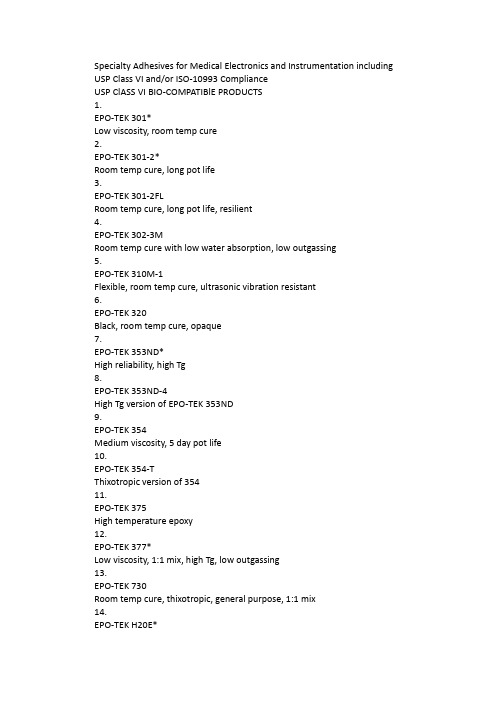
Specialty Adhesives for Medical Electronics and Instrumentation including USP Class VI and/or ISO-10993 ComplianceUSP ClASS VI BIO-COMPATIBlE PRODUCTS1.EPO-TEK 301*Low viscosity, room temp cure2.EPO-TEK 301-2*Room temp cure, long pot life3.EPO-TEK 301-2FLRoom temp cure, long pot life, resilient4.EPO-TEK 302-3MRoom temp cure with low water absorption, low outgassing5.EPO-TEK 310M-1Flexible, room temp cure, ultrasonic vibration resistant6.EPO-TEK 320Black, room temp cure, opaque7.EPO-TEK 353ND*High reliability, high Tg8.EPO-TEK 353ND-4High Tg version of EPO-TEK 353ND9.EPO-TEK 354Medium viscosity, 5 day pot life10.EPO-TEK 354-TThixotropic version of 35411.EPO-TEK 375High temperature epoxy12.EPO-TEK 377*Low viscosity, 1:1 mix, high Tg, low outgassing13.EPO-TEK 730Room temp cure, thixotropic, general purpose, 1:1 mix14.EPO-TEK H20E*Ag-filled ECA for microelectronics15.EPO-TEK OD2002*High Tg, low modulus/good toughness16.EPO-TEK OE184High temp, high Tg epoxy with reduced potential for dermatitis 17.EPO-TEK OG116-31*UV cure with excellent chemical resistance, thixotropic18.EPO-TEK OG603Ultra fast UV curing adhesive, optically clearElectrically Conductive / Thermally Conductive ProductsH20Efor Pt/Ir electrodes & catheter productsH20E-PFC / E2101 /E4110-PFCfor PZT ultrasound connectionsH24for ultrasound acoustic matchingH20E / H20Sfor hybrid pacemaker circuitsH20E-LCfor hearing aid microphonesThermally Conductive / Electrically Insulating ProductsTJ1183-LHfor MEMS hearing aid microphonesT905-BN4for cooling of CT and MRI devicesT7109for thermal sensors used in prevention ofsleep apneaH67-MPfor die attach of chip on PCBOptical Products353ND / 377 / CF6-2 for fiber optic bundles, light guidesand endoscopes301for X-ray scintillator crystal array310M-1 / 301-2FLfor opto-coupler junction ofphoto detectors in X-ray devices377Hfor IR sensors and thermometers301 / 301-2for fiber optic image bundles301-2FLfor LED, IR-LED, and photodiodeencapsulation, as well as pottingStructural Products / Molding Products301for molding medical implants and hybridleaded packages301 / 302-3M /OM118for filtration membranes353NDfor bonding diamonds onto scalpel bladesand polishing wheels353NDfor high speed motors in heavy duty sawsfor surgical uses730for general bonding of medical plasticsand implantsUV Cured ProductsOG116-31for resisting bleach in retinalimaging devicesOG142for dental device abrasivesOG603for curing in seconds in multipurposeapplications, coating of metal stentsSpecialty Adhesives for Medical Electronics andInstrumentation including USP Class VI Bio-Compatible and ISO-10993 Compliant MaterialsEpoxy Technology, Inc® supplies a wide variety of epoxy adhesives for use in the medicalindustry. Although these materials have been tested for USP Class VIBio-Compatibilityand/or ISO-10993 compliance, this does not guarantee its use in a medical device. Thiscertification is an excellent indicator that the adhesive will not cause issues during FDAapproval, however, Epoxy Technology strongly recommends independent testing for thefinal assembled product.上海通泰化学有限公司。
蠕动泵软管简介

蠕动泵专用软管的基本性能
• 软管作为蠕动泵必不可少的一部分,它的好坏直接决定了 泵的各项性能。回复性决定了吸力,强度决定了压力,弹 性决定了泵的使用寿命,孔径决定了流量大小,壁厚决定 了泵的本型的硅胶管,颜色透明,耐弱酸弱碱,符合 卫生级别,无毒无味,耐高温,耐老化。
3、应用:耐强酸碱(如98%浓度的浓硫酸)、大部分强腐 蚀有机溶剂(如氯仿等)
4、认证:FDA认证
蠕动泵泵管
道康宁 1、成份:白金催化型硅酮弹性体 2、特性:透明清晰无味,高回弹性,硬度72,温度﹣70至270度 3、应用:生物制品、药业等行业 4、认证:符合FDA ,3A卫生标准 , USP VI
• 客户在一般输送条件下都可以选用此款硅胶管,价格便宜 ,使用时间大约为进口长寿命管的一半。
特级硅胶管
• 此款为委托加工的硅胶管,颜色透明偏白,耐弱酸弱碱, 符合卫生级别,无毒无味,耐高温,耐老化。
• 此种硅胶管根据客户输送液体介质具体而定。
蠕动泵泵管
铂金硅胶管Tygon 3350
1、特性:无色透明,硬度50A,透气性很好,紫外线B级, 臭氧D级,温度﹣50至230度,理论使用寿命100小时
Tygon chemical——抗化学腐蚀管 1、成份:PVC和增塑剂混合物 2、特性:透明,硬度69,透气性极差,温度:﹣77至71度 3、应用:可用于输送清洁剂、墨水、水、食品饮料及化学试剂等流体
蠕动泵泵管
Viton
1、成份:Viton B氟橡胶
2、特性:不透明黑色,硬度75,透气性极差,温度﹣32至 205度,寿命30小时
2、应用:无腐蚀性、弱酸碱性液体传输,食品、饮料、化 妆品、生物制品、药业等行业
3、认证:符合ISO 10993标准生物适应证明文件,符合USP CLASS VI、 FDA和NSF51标准
奥松电子气体流量传感器AFM3000产品手册说明书

气体流量传感器产品手册AFM3000特性低压损流量范围:±200slm(双向)精度1.5%读数(典型值)快速响应完全校准和温度补偿零位漂移小产品概述AFM3000传感器是奥松电子的数字流量计,专为呼吸机应用而设计。
它以高超的精确度测量空气,氧气和其他非侵蚀性气体的流量。
风道内采用特殊设计,使得通过传感器的流动体的压损非常低,使其性能适用于各种苛刻的应用场景,例如医疗通风和呼吸应用。
AFM3000采用5V电源电压工作,具有数字I2C接口。
输出测量结果经过内部校准和温度补偿。
这款传感器的卓越性能基于奥松电子的传感器技术,内部由一个热式传感芯片和一个高性能集成24位AD采集的CMOS微处理器相连接。
气体流量由热传感器芯片测量,确保了非常快的信号处理时间和相比同类产品有最佳精度且具备双向测量功能。
应用范围医疗、过程自动化、燃烧器控制、燃料电池控制、光谱学、环境监测、实验室。
OEM行业定制与解决方案我司致力于研发各类传感器,有专业的研发实验室及仪器设备,配套多种仿真环境实验条件,打造高品质产品生产与检验工艺。
流量传感芯片是我司自主研发生产制造的芯片之一,可根据应用现场与客户需求定制作流量量程和设计独立的风道结构,专业为客户提供整套应用解决方案。
目录一、传感器性能 ................................................................................................................................................. - 3 -二、传感器电气特性 ......................................................................................................................................... - 4 -三、传感器通信 ................................................................................................................................................. - 4 -3.1 I2C通信接口特征与时序 ................................................................................................................... - 5 -3.2 传感器数据采集 ................................................................................................................................. - 5 -3.3读取设备ID ......................................................................................................................................... - 5 -3.4复位指令 .............................................................................................................................................. - 6 -3.5 AFM3000传感器I2C命令定义 ........................................................................................................... - 6 -3.6 AFM3000微流量传感器CRC计算例程 .............................................................................................. - 6 -3.7流量换算公式 ...................................................................................................................................... - 7 -四、引脚定义...................................................................................................................................................... - 8 -五、传感器典型电路 ......................................................................................................................................... - 8 -5.1 典型电路连接 ..................................................................................................................................... - 8 -六、外形尺寸(单位:mm) ............................................................................................................................. - 9 -6.1 AFM3000外形尺寸 .............................................................................................................................. - 9 -6.2机械配件 .............................................................................................................................................. - 9 -七、流量计型号列表 ....................................................................................................................................... - 10 -八、注意事项.................................................................................................................................................... - 10 -8.1校准方向 ............................................................................................................................................ - 10 -8.2入口流动条件 .................................................................................................................................... - 10 -8.3温度补偿 ............................................................................................................................................ - 10 -8.4传感器处理 ........................................................................................................................................ - 11 -8.5 ESD.................................................................................................................................................... - 11 -九、精度声明.................................................................................................................................................... - 11 -十、重要警告.................................................................................................................................................... - 11 -一、传感器性能1表2:介质兼容性和材料1除非另有说明,否则所有传感器规格均在25℃且VDD = 5V且绝对压力= 966 mbar的条件下有效2 AFM3000-200型号为±200slm量程,其它型号见表103在20℃和1013 mbar下以每分钟标准升4在理想的入口和出口条件下,VDD = 5V,25℃,绝对压力= 966 mbar5包括偏移,非线性,滞后6传感器水平位置(请参阅第8.1节)7跨度或偏移值,以较大者为准8与校准温度相比,温度变化引起的偏移二、传感器电气特性电气特性,如休眠功耗,测量功耗等,都取决于电源。
医用级abs标准
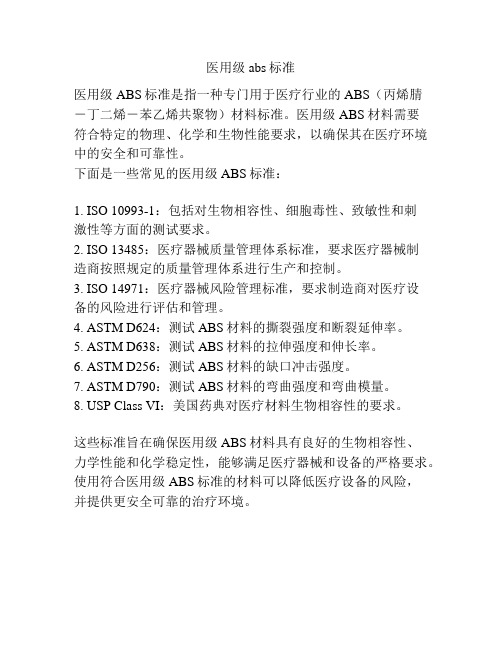
医用级abs标准
医用级ABS标准是指一种专门用于医疗行业的ABS(丙烯腈
-丁二烯-苯乙烯共聚物)材料标准。
医用级ABS材料需要
符合特定的物理、化学和生物性能要求,以确保其在医疗环境中的安全和可靠性。
下面是一些常见的医用级ABS标准:
1. ISO 10993-1:包括对生物相容性、细胞毒性、致敏性和刺
激性等方面的测试要求。
2. ISO 13485:医疗器械质量管理体系标准,要求医疗器械制
造商按照规定的质量管理体系进行生产和控制。
3. ISO 14971:医疗器械风险管理标准,要求制造商对医疗设
备的风险进行评估和管理。
4. ASTM D624:测试ABS材料的撕裂强度和断裂延伸率。
5. ASTM D638:测试ABS材料的拉伸强度和伸长率。
6. ASTM D256:测试ABS材料的缺口冲击强度。
7. ASTM D790:测试ABS材料的弯曲强度和弯曲模量。
8. USP Class VI:美国药典对医疗材料生物相容性的要求。
这些标准旨在确保医用级ABS材料具有良好的生物相容性、
力学性能和化学稳定性,能够满足医疗器械和设备的严格要求。
使用符合医用级ABS标准的材料可以降低医疗设备的风险,
并提供更安全可靠的治疗环境。
USPVI6
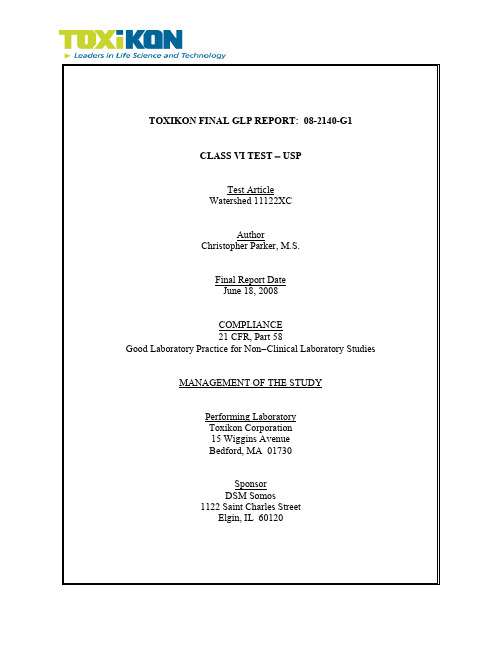
Table 1: Table 2: Table 3: Table 4: Appendix I:
Page 2 of 21
Class VI Test − USP Project Number: 08-2140-G1 Test Article: Watershed 11122XC
STUDY SUMMARY The USP 0.9% Sodium Chloride for Injection (NaCl), Cottonseed Oil (CSO), 1 in 20 Ethanol in NaCl (EtOH), and Polyethylene Glycol 400 (PEG) extracts of the test article and the test article, Watershed 11122XC, did not produce a biological response following intramuscular implantation in rabbits, intracutaneous injection in rabbits, or systemic injection in mice. Therefore, the test article meets the requirements of the USP guidelines, for Class VI Plastics − 50 °C.
USP88classVIvsISO10993
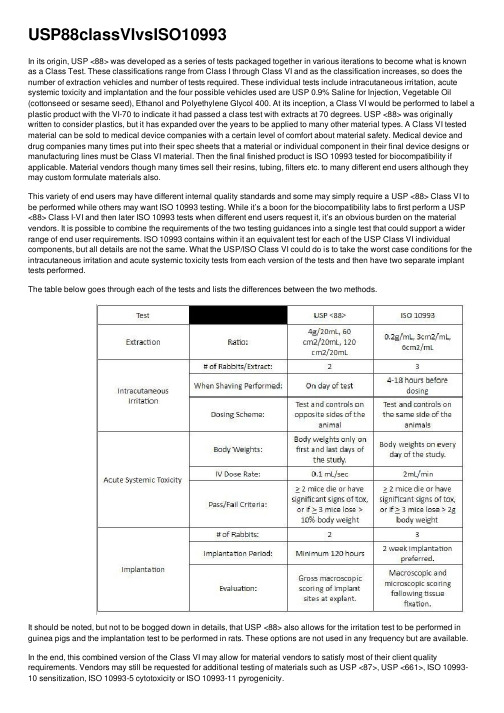
USP88classVIvsISO10993In its origin, USP <88> was developed as a series of tests packaged together in various iterations to become what is known as a Class Test. These classifications range from Class I through Class VI and as the classification increases, so does the number of extraction vehicles and number of tests required. These individual tests include intracutaneous irritation, acute systemic toxicity and implantation and the four possible vehicles used are USP 0.9% Saline for Injection, Vegetable Oil (cottonseed or sesame seed), Ethanol and Polyethylene Glycol 400. At its inception, a Class VI would be performed to label a plastic product with the VI-70 to indicate it had passed a class test with extracts at 70 degrees. USP <88> was originally written to consider plastics, but it has expanded over the years to be applied to many other material types. A Class VI tested material can be sold to medical device companies with a certain level of comfort about material safety. Medical device and drug companies many times put into their spec sheets that a material or individual component in their final device designs or manufacturing lines must be Class VI material. Then the final finished product is ISO 10993 tested for biocompatibility if applicable. Material vendors though many times sell their resins, tubing, filters etc. to many different end users although they may custom formulate materials also.This variety of end users may have different internal quality standards and some may simply require a USP <88> Class VI to be performed while others may want ISO 10993 testing. While it’s a boon for the biocompatibility labs to first perform a USP <88> Class I-VI and then later ISO 10993 tests when different end users request it, it’s an obvious burden on the material vendors. It is possible to combine the requirements of the two testing guidances into a single test that could support a wider range of end user requirements. ISO 10993 contains within it an equivalent test for each of the USP Class VI individual components, but all details are not the same. What the USP/ISO Class VI could do is to take the worst case conditions for the intracutaneous irritation and acute systemic toxicity tests from each version of the tests and then have two separate implant tests performed.The table below goes through each of the tests and lists the differences between the two methods.It should be noted, but not to be bogged down in details, that USP <88> also allows for the irritation test to be performed in guinea pigs and the implantation test to be performed in rats. These options are not used in any frequency but are available. In the end, this combined version of the Class VI may allow for material vendors to satisfy most of their client quality requirements. Vendors may still be requested for additional testing of materials such as USP <87>, USP <661>, ISO 10993-10 sensitization, ISO 10993-5 cytotoxicity or ISO 10993-11 pyrogenicity.Now, I know there may be some manufacturers out there wondering if they can submit USP <88> testing in lieu of ISO 10993 testing and the answer is an emphatic no! Also, just because all of the materials used to make a device are USP <88> Class VI certified it does not mean manufacturers are exempt from 10993-1 evaluation. When different material components are combined to form finished products that are then sterilized, there are a lot of chemical interactions going on which can form byproducts. Analytical chemists and sterilization specialists can talk your ear off on this and I promise you’ll learn a few new things after talking with them. Class VI tests are an important tool in your toolbox, but you’ll need all your tools to build your framework, biological evaluation andfinal toxicological risk assessments.Moving forward, there are current discussions about USP <87> and <88> that they become more of a risk based evaluation of raw materials or manufacturing components closer to a ISO 10993-1 approach. A meeting was held at USP regarding this topic and while changes aren’t imminent, they are on the horizon.。
液态硅胶(LSR)射出成型在医疗配件方面的材料选择

液态硅胶(LSR)射出成型在医疗配件方面的材料选择据本人跟欧美客户合作过程中的经验体会,医疗用呼吸面罩、喉罩的硅胶部分,大多用液态硅胶射出成型加工,因为液态硅胶在环保安全、品质、外观方面更容易得到保证。
在材料选择方面,大多会选用符合USP CLASS VI SILICONE的材料。
我们在实际中会建议客户使用BLUE STAR Silbione Liquid Silicone Rubber for Health care ( 4330, 4340, 4340FC等)。
BLUE STAR SILBIONE LSR 具有如下特点:1. SILBIIONE Liquid Silicone Rubbers (LSRs) are two-component platinum-catalyzed silicone elastomers designed for liquid injection molding healthcare and medcial devices, including applications of less than 30 day implantation in the human body.2. Hardness ranges from 30-70 durometers Shore A3. Bluestar Silicones's Silbiones LSRs offer the distinctive advantages of easy processing and easy release combined with high performance physical properties.4. Silbiones LSRs meet or exceed testing requirements of United States Pharmacopoeia (USP) Class VIApplications:1.Fabrication of healthcare and medical devices, including less than 30 day implantation2. skin contact parts like masks or goggles3.Infant care products4. Overmolding (Silbione LSR60)欢迎同行专业人士就本文所述问题进行深入交流:。
医疗胶粘剂简介
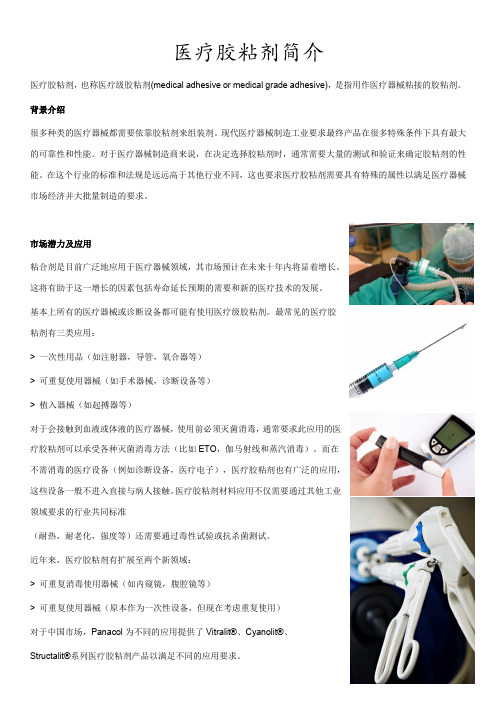
医疗胶粘剂简介医疗胶粘剂,也称医疗级胶粘剂(medical adhesive or medical grade adhesive),是指用作医疗器械粘接的胶粘剂。
背景介绍很多种类的医疗器械都需要依靠胶粘剂来组装剂。
现代医疗器械制造工业要求最终产品在很多特殊条件下具有最大的可靠性和性能。
对于医疗器械制造商来说,在决定选择胶粘剂时,通常需要大量的测试和验证来确定胶粘剂的性能。
在这个行业的标准和法规是远远高于其他行业不同,这也要求医疗胶粘剂需要具有特殊的属性以满足医疗器械市场经济并大批量制造的要求。
市场潜力及应用粘合剂是目前广泛地应用于医疗器械领域,其市场预计在未来十年内将显着增长。
这将有助于这一增长的因素包括寿命延长预期的需要和新的医疗技术的发展。
基本上所有的医疗器械或诊断设备都可能有使用医疗级胶粘剂。
最常见的医疗胶粘剂有三类应用:> 一次性用品(如注射器,导管,氧合器等)> 可重复使用器械(如手术器械,诊断设备等)> 植入器械(如起搏器等)对于会接触到血液或体液的医疗器械,使用前必须灭菌消毒,通常要求此应用的医疗胶粘剂可以承受各种灭菌消毒方法(比如ETO,伽马射线和蒸汽消毒)。
而在不需消毒的医疗设备(例如诊断设备,医疗电子),医疗胶粘剂也有广泛的应用,这些设备一般不进入直接与病人接触。
医疗胶粘剂材料应用不仅需要通过其他工业领域要求的行业共同标准(耐热,耐老化,强度等)还需要通过毒性试验或抗杀菌测试。
近年来,医疗胶粘剂有扩展至两个新领域:> 可重复消毒使用器械(如内窥镜,腹腔镜等)> 可重复使用器械(原本作为一次性设备,但现在考虑重复使用)对于中国市场,Panacol为不同的应用提供了Vitralit®、Cyanolit®、Structalit®系列医疗胶粘剂产品以满足不同的应用要求。
标准及法规粘合剂和医疗器械设备的最终用户期望这些器械可以经受严格消毒,接触到液体以及偶尔不断使用的考验。
硅橡胶材料标准规范

硅橡胶材料标准规范硅橡胶是一种高分子材料,具有耐高温、耐磨损、耐老化、耐紫外线、耐氧化、电绝缘等优良特性。
因此,在航空、航天、电子、汽车、医疗等领域都有广泛的应用。
为了保证硅橡胶产品的质量、可靠性和相互兼容性,需要制定硅橡胶材料标准规范。
本文将从材料性能、试验方法、应用标准等方面探讨硅橡胶材料标准规范。
一、材料性能硅橡胶的材料性能是制定标准规范的重要依据。
为了满足不同领域应用的要求,可将硅橡胶材料性能分为物理性能、机械性能、热学性能、化学性能、电学性能等多个方面。
1.物理性能硅橡胶的物理性能包括密度、硬度、弹性模量、伸长率、拉伸强度、抗撕裂性等。
这些性能对于硅橡胶的加工、成型、使用都有重要的影响,其中硬度和弹性模量是最为重要的指标之一。
2.机械性能硅橡胶的机械性能分为静态和动态两种。
静态机械性能包括压缩强度、剪切强度、抗张强度、抗扭强度、压缩模量等。
动态机械性能包括动态拉伸强度、动态剪切强度、动态蠕变强度等。
3.热学性能硅橡胶的热学性能包括热膨胀系数、热导率、热传导系数、热容量等。
这些性能在高温环境下尤为重要。
4.化学性能硅橡胶的化学性能包括耐酸碱、耐油、耐溶剂、耐氧化、耐紫外线等指标。
这些性能对于硅橡胶的应用环境选择和使用寿命有决定性的影响。
5.电学性能硅橡胶的电学性能包括介电常数、介电强度、体电阻率、表面电阻率等。
这些性能在电气领域的应用尤为重要。
二、试验方法制定硅橡胶材料标准规范需要考虑到试验方法的标准化,以保证试验结果的可靠性和准确性。
1.物理试验硅橡胶的物理试验包括密度测定、硬度测定、弹性模量测定、伸长率测定、拉伸强度测定、抗撕裂性测定等。
2.机械试验硅橡胶的机械试验包括压缩强度测定、剪切强度测定、抗张强度测定、抗扭强度测定、压缩模量测定等。
3.热学试验硅橡胶的热学试验包括热膨胀系数测定、热导率测定、热传导系数测定、热容量测定等。
4.化学试验硅橡胶的化学试验包括酸碱耐性测定、油耐性测定、溶剂耐性测定、氧化稳定性测定、紫外线稳定性测定等。
硅橡胶

硅橡胶|硅橡胶性能|硅橡胶物性简介硅橡胶作为常用橡胶的一种,其属于合成橡胶中特殊橡胶类。
其具有许多优良性能,如无毒,与人体相容性好,耐高低温,耐臭氧,耐紫外线等。
随着人们环保意识的增强与硅橡胶价格的走低,硅橡胶也应用越来越广泛。
本文将对硅橡胶物理性能作简要介绍:1、机械性能:体现机械性能的参数有硬度,拉伸强度,抗撕强度,扯断伸长率,回弹性,压缩户久变形率等。
硅橡胶的硬度现在可以做到SHOREA 0-90度,常用硬度为30-70度,30度以下为低硬度硅胶,70度以上为高硬度硅胶。
硅橡胶的拉伸强度一般在10MPa以下,做到11较难,12很难做到。
一般来说气相硅橡胶要比沉淀硅橡胶拉伸强度要高。
抗撕强度:常用测度抗撕强度的方法有直角法和半圆法,两者测试值不同,用直角法测试高抗撕硅胶一般能达到将近50Kgf/cm,用半圆法测试可达35Kgf/cm以上。
高抗撕硅胶都是气相法硅橡胶。
硅橡胶的扯断伸长率一般随着硬度提高而减小,因而低硬度硅橡胶的扯断伸长率要更高,有的可达1000%以上,气相法硅橡胶的扯断伸长率经同硬度的沉定法硅橡胶要高。
硅橡胶的压缩永久变形率最低的可作到5%以下,这一参数与回弹性有关,但又不尽相同,其是作硅橡胶胶辊,密封件等产品关注的一个重要参数。
回弹性硅橡胶重要机械性能之一,高回弹硅橡胶的回弹性可做到70以上,有的甚至可达802、硅橡胶的热性能:硅橡胶是在现在橡胶品种中最耐高低温的品种,低温可耐零下90摄氏度,高温可达300摄氏度以上。
普通硅橡胶的工作温度范围一般零下40度到零上180度之间。
事实上很多时候选用硅橡胶都是因为其热性能的优势才采用的,如在寒冷地区的冬天,一些橡胶件就必须使用硅橡胶才行。
3、硅橡胶电性能:一般硅橡胶是绝缘的,特制硅橡胶才是导电的,判断硅橡胶是否导电的参数是体积电阻率,其单位是Ω*m,体积电阻率在109数值以上为绝缘硅橡胶,数值在106-109之间的,为抗静电硅橡胶,106以下的为导电硅橡胶。
usp美国药典等级

usp美国药典等级美国药典级usp calss vi美国药典级(usp)实际上含义:美国药典(usp)是一个非政府组织,通过建立最新的标准来保证药品和其他保健技术的质量,从而支持公共卫生。
该组织与制药和生物技术行业有关。
美国药典规定了质量、纯度、强度和一致性的标准。
这些usp 标准发表在《美国药典》和《国家处方集》(usp nf)中。
usp第四类产品经过一系列的生物试验。
usp第六类化合物必须由具有明确生物相容性历史的成分制成,以满足对渗滤液的严格要求。
动物用来测试材料的毒性。
急性毒性试验:该试验测量试验材料的刺激性,控制其对人体的潜在危害。
毒性由口腔、皮肤和吸入决定。
皮内试验:这种特殊的试验将材料直接注射到正常使用过程中接触到的组织中,不保护皮肤或任何其他身体系统。
这将允许测试团队评估特定组织对材料的响应。
植入试验:植入试验确定植入活体动物时活体组织对材料的反应。
usp六级试验所需的标准植入时间为5天。
如果在5天后没有刺激或毒性的迹象,它将满足试验的植入要求。
温度和时间:用于全身毒性和皮内试验的材料提取物固定在设定的温度和暴露时间,以确保结果符合通用标准。
用三种不同的温度和时间暴露条件处理所有的材料提取物。
前72小时在122°F或50°C下给药,然后在158°F下给药24小时,最后在250°F下给药1小时。
usp第六类塑料试验旨在评价各种塑料材料在体内的生物反应性。
为了测试药物容器,塑料类测试经常在未焊接的塑料树脂和容器上进行。
类塑料测试不是生物相容性测试的替代品,但通常被制造商用来对材料进行分类。
塑料的分类包括三种体内试验。
系统注射试验和皮内试验旨在通过单剂量注射特定提取物来控制对塑料和其他聚合物的全身和局部生物反应。
第三种测试,即植入测试,旨在评估活组织对测试材料的反应。
利用这三个试验和不同提取物的不同排列,完成了六个不同等级的塑料等级试验。
usp定义了六种塑料类别,从i到vi(vi仍然是最严格的)。
制药卫生级软管
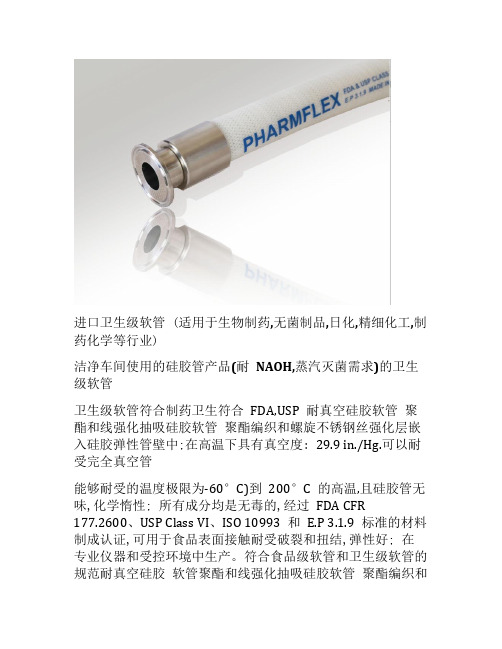
进口卫生级软管 (适用于生物制药,无菌制品,日化,精细化工,制药化学等行业)洁净车间使用的硅胶管产品(耐NAOH,蒸汽灭菌需求)的卫生级软管卫生级软管符合制药卫生符合FDA,USP 耐真空硅胶软管聚酯和线强化抽吸硅胶软管聚酯编织和螺旋不锈钢丝强化层嵌入硅胶弹性管壁中;在高温下具有真空度: 29.9 in./Hg.可以耐受完全真空管能够耐受的温度极限为-60°C)到200°C 的高温,且硅胶管无味,化学惰性; 所有成分均是无毒的,经过FDA CFR177.2600、USP Class VI、ISO 10993 和E.P 3.1.9 标准的材料制成认证,可用于食品表面接触耐受破裂和扭结,弹性好; 在专业仪器和受控环境中生产。
符合食品级软管和卫生级软管的规范耐真空硅胶软管聚酯和线强化抽吸硅胶软管聚酯编织和螺旋不锈钢丝强化层嵌入硅胶弹性管壁中在高温下具有真空度:29.9 in./Hg.无味,化学惰性所有成分均是无毒的,经过FDA(CFR 177.2600)认证,可用于食品表面接触耐受破裂和扭结,弹性好在专业仪器和受控环境中生产。
符合食品级软管和卫生级软管的规范2)特氟龙软管,耐腐蚀,耐酸碱,耐有机溶剂等的卫生级软管童颜需要符合fda,usp生物制药卫生等级认证的需求常见的需要耐蒸汽灭菌,酸碱消毒的需求食品制药卫生级软管,其中包括特氟龙软管。
特氟龙软管具有化学惰性好,使用寿命长,应用广泛等特点。
我们提供的特氟龙软管全部符合3A、FDA、USP Class VI、ISO10993 和 E.P 3.1.9 标准。
其结构主要包括:01) 不锈钢丝加强平滑PTFE 软管02) 不锈钢丝加强平滑黑色导静电PTFE 防爆软管03) 316 不锈钢丝或聚丙烯(PP)编织加强螺旋PTFE 软管04) 316 不锈钢丝或聚丙烯(PP)编织加强螺旋黑色导静电PTFE 防爆软管05) PVDF 编织加强螺旋PTFE 软管06) PVDF 编织加强螺旋黑色导静电PTFE 防爆软管07) 不锈钢丝加强螺旋PFA 软管08) 无任何加强螺旋纯特氟龙软管09) 硅胶包覆平滑PFA 软管10) 橡胶包覆平滑特氟龙软管11) 橡胶包覆平滑黑色导电特氟龙防爆软管12) 316 不锈钢丝或聚丙烯(PP)编织加强螺旋PFA 软管13) 超高压PTFE 软管14) 大口径PTFE 真空耐压管15) PTFE 电加热软管16) 公制或者英制特氟龙软管及接头17) 特氟龙视镜管我们可以提供内径 3.2 毫米至250 毫米口径的特氟龙软管,同时搭配我司特氟龙软管可组装扣压超过40 种接头,包括平面卡箍接头、法兰、SMS、DIN11851、螺纹和活接接头以及快接接头等。
通过USP Class VI标准测试的WaterShed XC11122
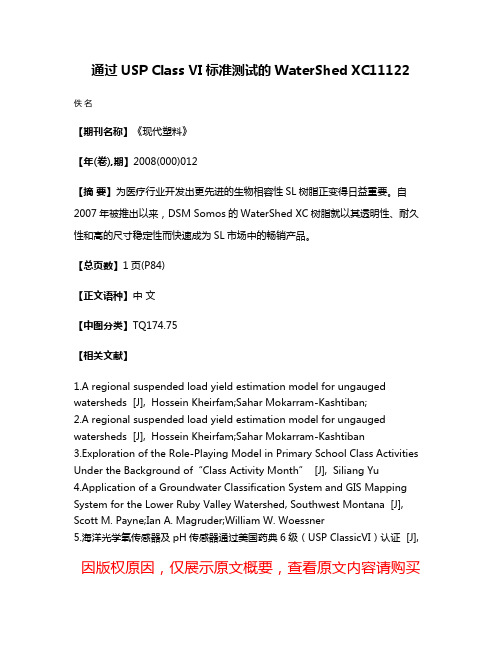
通过USP Class VI标准测试的WaterShed XC11122佚名【期刊名称】《现代塑料》【年(卷),期】2008(000)012【摘要】为医疗行业开发出更先进的生物相容性SL树脂正变得日益重要。
自2007年被推出以来,DSM Somos的WaterShed XC树脂就以其透明性、耐久性和高的尺寸稳定性而快速成为SL市场中的畅销产品。
【总页数】1页(P84)【正文语种】中文【中图分类】TQ174.75【相关文献】1.A regional suspended load yield estimation model for ungauged watersheds [J], Hossein Kheirfam;Sahar Mokarram-Kashtiban;2.A regional suspended load yield estimation model for ungauged watersheds [J], Hossein Kheirfam;Sahar Mokarram-Kashtiban3.Exploration of the Role-Playing Model in Primary School Class Activities Under the Background of“Class Activity Month” [J], Siliang Yu4.Application of a Groundwater Classification System and GIS Mapping System for the Lower Ruby Valley Watershed, Southwest Montana [J], Scott M. Payne;Ian A. Magruder;William W. Woessner5.海洋光学氧传感器及pH传感器通过美国药典6级(USP ClassicVI)认证 [J],因版权原因,仅展示原文概要,查看原文内容请购买。
橡胶软管 各类标准
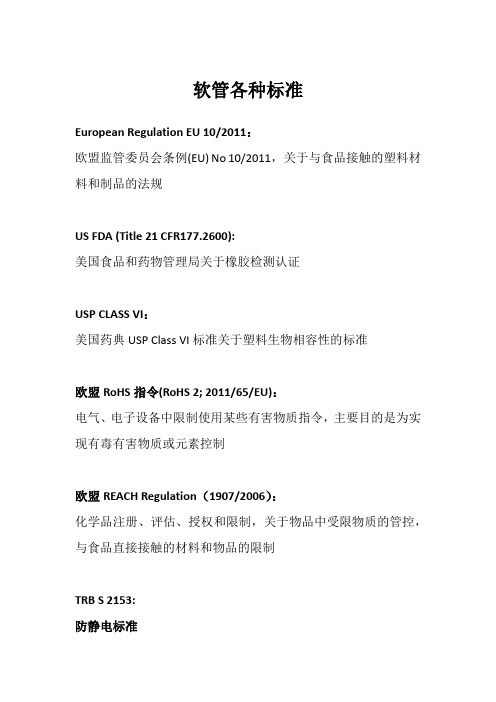
软管各种标准
European Regulation EU 10/2011:
欧盟监管委员会条例(EU) No 10/2011,关于与食品接触的塑料材料和制品的法规
US FDA (Title 21 CFR177.2600):
美国食品和药物管理局关于橡胶检测认证
USP CLASS VI:
美国药典USP Class VI标准关于塑料生物相容性的标准
欧盟RoHS指令(RoHS 2; 2011/65/EU):
电气、电子设备中限制使用某些有害物质指令,主要目的是为实现有毒有害物质或元素控制
欧盟REACH Regulation(1907/2006):
化学品注册、评估、授权和限制,关于物品中受限物质的管控,与食品直接接触的材料和物品的限制
TRB S 2153:
防静电标准
ATEX证书:
欧盟ATEX是CE认证下的防爆指令
DIN EN ISO 8031-2010 :
欧盟关于橡胶和塑料软管和软管组件.电阻率和电导率的测定(ISO 8031-2009).标准,关于防静电标准(EB/EC)
UL 94 标准:
美国设备和器具部件材料的可燃性能试验,关于防火阻燃标准
BfR XV-Silicones:
德国关于食品接触材料的安全要求。
三分钟看懂医用聚氨酯弹性体
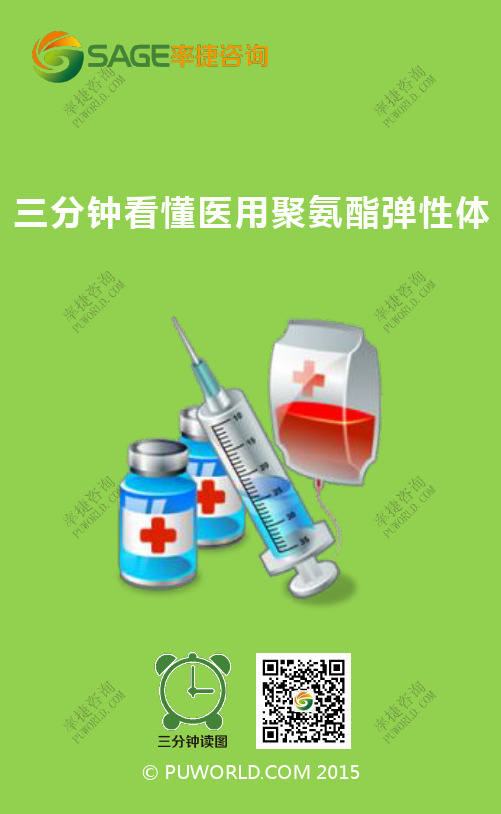
三分钟看懂医用聚氨酯弹性体© 2015什么是聚氨酯弹性体2聚氨酯弹性体(TPU)是由软链段和硬链段交替镶嵌组成的、含有许多—NHCOO—基团的极性高聚物,通过选择适当的软、硬链段结构及其比例,就可以合成出来既具有良好的物理机械性能,又具有血液相溶性和生物相溶性的医用高分子材料。
其中,在医疗中使用的聚氨酯弹性体主要是热塑性聚氨酯(TPU)弹性体。
TPU是由软段(长链的低聚二醇)及(二异氰酸酯及扩链剂)所组成的线型嵌段聚合物,聚氨酯分子结构中的软硬段存在着极性的相溶性。
由于TPU加工方便,性能优异,已被广泛应用于制备多种医疗及保健产品。
聚氨酯弹性体主要性能3聚氨酯弹性体之所以能广泛应用于生物医学领域,与它所具备的优异性能是分不开的。
优良的抗凝血性能毒性试验结果符合医用要求临床应用中生物相容性好,无致畸变作用,无过敏反应具有优良的韧性和弹性,加工性能好,加工方式多样具有优异的耐磨性能、软触感、耐湿气性、耐多种化学药品性能能采用通常的方法灭菌,暴露在X 射线下性能不变425163医用聚氨酯弹性体的发展进程420世纪50年代20世纪70年代1958年聚氨酯首次用于骨折修复材料,而后又成功地应用于血管外科手术缝合用补充涂层。
聚氯酯弹性体作为一种医用材料已倍受重视!20世纪80年代用聚氨酯弹性体制造人工心脏移植手术获得成功,使聚氨酯材料在生物医学上的应用得到进一步的发展。
聚氨酯弹性体在医学上的用途日益厂泛。
21世纪2015年按材料分:医用聚氨酯产品可分为医用聚氨酯生物弹性体、医用聚氨酯泡沫、医用聚氨酯黏合剂、医用聚氨酯涂料以及医用聚氨酯水凝胶等。
按用途分:目前在医学上,特别是在制造植入人体的各种医疗用品方面有着广泛的用途,应用领域包括人工心脏瓣膜、人工肺、骨粘合剂、人工皮肤与烧伤敷料、心脏起博器导线、缝线、各种夹板、导液管、人工血管、气管、插管、齿科材料、计划生育用品等。
人工心脏及心脏辅助装置目前在医学上,特别是在制造植入人体的各种医疗用品方面有着广泛的用途,应用领域包括人工心脏瓣膜、人工肺、骨粘合剂、人工皮肤与烧伤敷料、心脏起博器导线、缝线、各种夹板、导液管、人工血管、气管、插管、齿科材料、计划生育用品等。
激光共聚焦培养皿使用方法
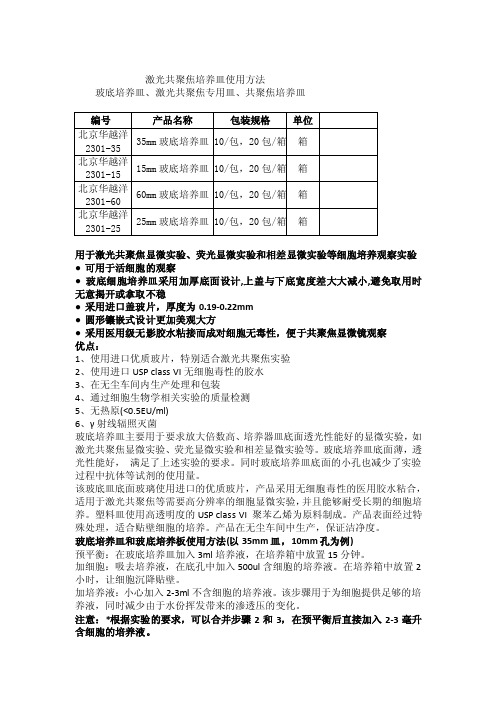
激光共聚焦培养皿使用方法玻底培养皿、激光共聚焦专用皿、共聚焦培养皿用于激光共聚焦显微实验、荧光显微实验和相差显微实验等细胞培养观察实验●可用于活细胞的观察●玻底细胞培养皿采用加厚底面设计,上盖与下底宽度差大大减小,避免取用时无意揭开或拿取不稳●采用进口盖玻片,厚度为0.19-0.22mm●圆形镶嵌式设计更加美观大方●采用医用级无影胶水粘接而成对细胞无毒性,便于共聚焦显微镜观察优点:1、使用进口优质玻片,特别适合激光共聚焦实验2、使用进口USP class VI无细胞毒性的胶水3、在无尘车间内生产处理和包装4、通过细胞生物学相关实验的质量检测5、无热原(<0.5EU/ml)6、γ射线辐照灭菌玻底培养皿主要用于要求放大倍数高、培养器皿底面透光性能好的显微实验,如激光共聚焦显微实验、荧光显微实验和相差显微实验等。
玻底培养皿底面薄,透光性能好,满足了上述实验的要求。
同时玻底培养皿底面的小孔也减少了实验过程中抗体等试剂的使用量。
该玻底皿底面玻璃使用进口的优质玻片,产品采用无细胞毒性的医用胶水粘合,适用于激光共聚焦等需要高分辨率的细胞显微实验,并且能够耐受长期的细胞培养。
塑料皿使用高透明度的USP class VI 聚苯乙烯为原料制成。
产品表面经过特殊处理,适合贴壁细胞的培养。
产品在无尘车间中生产,保证洁净度。
玻底培养皿和玻底培养板使用方法(以35mm皿,10mm孔为例)预平衡:在玻底培养皿加入3ml培养液,在培养箱中放置15分钟。
加细胞:吸去培养液,在底孔中加入500ul含细胞的培养液。
在培养箱中放置2小时,让细胞沉降贴壁。
加培养液:小心加入2-3ml不含细胞的培养液。
该步骤用于为细胞提供足够的培养液,同时减少由于水份挥发带来的渗透压的变化。
注意:*根据实验的要求,可以合并步骤2和3,在预平衡后直接加入2-3毫升含细胞的培养液。
玻片厚度的选择:共聚焦培养皿市场上有很多种,但大多数玻底厚度都是0.19-0.23mm,而实验表明,0.13-0.16mm是最佳的玻底厚度。
- 1、下载文档前请自行甄别文档内容的完整性,平台不提供额外的编辑、内容补充、找答案等附加服务。
- 2、"仅部分预览"的文档,不可在线预览部分如存在完整性等问题,可反馈申请退款(可完整预览的文档不适用该条件!)。
- 3、如文档侵犯您的权益,请联系客服反馈,我们会尽快为您处理(人工客服工作时间:9:00-18:30)。
What is USP Class VI Testing and Why isit ImportantTo begin, let us explain first what USP actually stands for: The United States Pharmacopeia (USP) is a non-government organization that endorses public health by establishing up to the minute standards to safeguard the quality of medicines and other health care technologies. This organization is concerned with the pharmaceutical and bio-technology industries. The USP sets standards for quality, purity, strength and consistency. These USP Standards are published in the US Pharmacopeia and the National Formulary (USP NF).USP Class IV types of products go through a series of biological tests. The USP Class VI compounds must be made from ingredients with clear histories of biocompatibility that meet tight requirements for leachates.Animals are used to test the toxicity of materials.∙Acute Systemic Toxicity Test: This test measures the irritant effect of the test material and governs its human hazard potential. Toxicity is determined by oral, dermal andinhalation.∙Intracutaneous Test: This specific test administers the material straight to the tissues it will be in contact during normal use without protection of the skin or any other body system.This will allow the testing team to assess the response of particular tissues to the material. Implantation Test: The implantation test determines the response of live tissue to the material when implanted into a live animal. The standard implantation time required for a USP Class VI test is five days. If after the five-day period there are no signs of irritation or toxicity, it will meet the implantation requirements of the test.∙Standard Temperatures and Times: The material extracts used on the systemic toxicity and intracutaneous tests are fixed at set temperatures and exposure times to ensure theresults meet a common standard. All material extracts are processed using three different temperature and time exposure conditions. Initially it is administered at 122 degrees Fahrenheit, or 50 centigrade, during 72 hours, then at 158 Fahrenheit for 24 hours and finally at 250 Fahrenheit one hour.USP Class VI Plastic Tests are designed to evaluate the biological reactivity of various types of plastics materials in vivo. Developed to test drug containers, the class plastics tests are frequently done on unmolded plastic resins as well as containers. Class plastics testing is not a replacement for biocompatibility testing, but is commonly used by manufacturers to classify materials.There are three in vivo tests included in the classification of plastics. The Systemic Injection Test and the Intracutaneous Test are designed to control the systemic and local biological responses to plastics and other polymers by the single-dose injection of specific extracts made from a sample. The third test, the Implantation Test, is designed to assess the reaction of living tissue to a test material. The testing for the six different class plastics levels is all done using different arrangements of these three tests and different extracts.The USP defines six plastics classes, from I to VI (VI remaining the strictest). Consequently, several plastics manufacturers find it beneficial to have their plastic resins certified as USP Class VI, particularly if the resin is a candidate to be used in medical devices. A plastic resin material that has passed Class VI certification is expected to be more likely to produce favorable biocompatibility results.For a product to pass USP Class VI standards, it must exhibit a very low level of toxicity by passing all of the tests requirements. Compliance to USP Class VI is often requested by end users. Testing for compliance involves an assessment of the effects of the material, and extractables, on tissue.So who uses UPS Class VI elastomers in the sanitary process industry? Primarily biopharmaceutical manufacturers for their process equipment. Sanitary diaphragm valves have USP Class VI diaphragms. Most single use process components suchas silicone and C Flex tubing, plastic connectors and single use bags all require USP Class VI certification. Sanitary pumps require Class VI O-rings and seal material. Andsanitary Tri-Clamp gaskets are all required to be USP Class VI. Holland Applied Technologies distributes a variety of USP Class VI compliant sanitary hose assemblies, O-rings, sanitary gaskets and seals in various elastomer types, including EPDM, SILICONE, FKM (VITON), and PTFE (TEFLON).If you have questions about this post or we can be of any assistance to you regarding USP Class VI materials or any other issues in the hygienic process world, contact us and we will do our best to assist you.。
